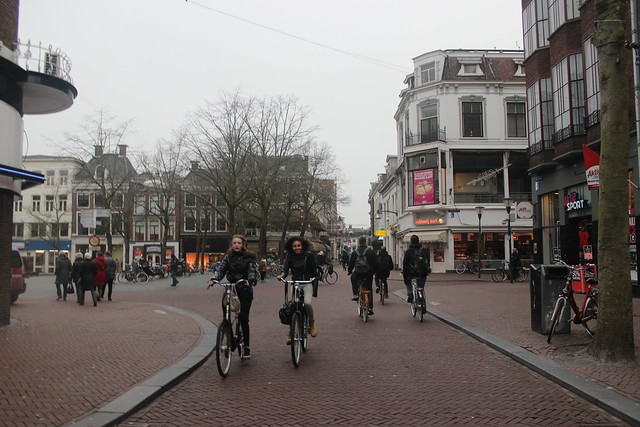A few weeks ago, I participated in a radio call-in show about urban cycling during which a caller expressed her fear that her adult son was going to be killed on the roads. He is a bicycle commuter who had already been struck by cars twice while riding inside a painted bike lane.
I mumbled a rather lame response about how better infrastructure would help. But the caller’s rather terrifying story stuck in my mind. Especially over the past several weeks, when I’ve been watching this scene come together on two different roads that I ride a bike on regularly.
https://www.instagram.com/p/BJwmi6YAsfr/
When public consultations over the idea of making these rather busy single-lane roads more bike- and pedestrian-friendly began more than a year ago, I was heartened. I’ve been riding them for years, and I welcomed anything that might make cyclists safer. I dutifully offered my feedback during the consultation process, emphasizing the need to protect cyclists from cars in order to encourage all people to ride, no matter their ability nor confidence.
Weeks later, the plan emerged. Sigh. Some stripes. Some painted stripes on the asphalt. As a cyclist, I’ve been conditioned to be grateful for any miserable old infrastructure crumb thrown my way, but you’ll please forgive my lack of enthusiasm for a painted line. Is this really going to protect cyclists, or encourage anyone to ride?
On some level, I understand why the decision was made to do nothing more here than lay down some paint. Budgets are tight. Not all residents in the area supported bike infrastructure. Building proper segregated bike lanes can be controversial. Business worried about losing too many parking spaces. The streets can be too narrow for anything else under traffic guidelines. Blah, blah, blah — it’s the same arguments in every city over and over again.
To be fair, these projects did offer some improvements to pedestrians and in slowing traffic (the latter done, mostly, by putting cyclists in the way of cars). But if the fundamental purpose of a bike lane is to make it safe enough for people of all type to ride in, no matter their skill, I thought I’d test the theory in the simplest way I knew how. I’d take my 11-year-old son onto one of the new lanes and see what he thought about it.
Before this project, he refused to ride on one of these roads because he felt unsafe. Now? He excitedly gave the bike lane a try (yes, he’s as nerdy about bike infrastructure as his dad). He cares little for the politics and compromise that goes into bike infrastructure. He just wants to ride without getting pancaked by an SUV. On this lane, it didn’t take long before he said he felt trapped between moving cars and the door zone. The verdict? “I don’t get it,” he said. “What’s better about this?”
Good question. Were there other options for these projects? Absolutely. The bike lane could have been segregated by a barrier. The bike lane could have been placed between the curb and parked cars, thereby using parked vehicles as a barrier, which was the winning suggestion last year when I asked readers to choose a better design. The bike lane could have been raised a few inches to create an easy barrier, as we’ve seen in other countries. Or, something wacky could have been done, like these others suggestions from readers.
I know how difficult it can be for city planners to get bike infrastructure of any kind built in our political environment. And I understand the argument of incrementalism — painted lanes are a more palatable baby step toward better infrastructure in the future. But let’s not pretend this is anything more than a compromise that doesn’t even meet the first standard of bike infrastructure: encouraging an enthusiastic kid to ride in them.
I understand why lanes like this are installed, but when my son takes his bike down this road, that’s all just noise. My thoughts will be on that worried mom from the call-in show.
What’s your feeling on painted bike lanes? Do you use them? Do you think more should be built? Or is it time to move past them into better, safer infrastructure? Use the comments below, or let the author know what you think on Twitter or Facebook.






